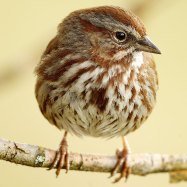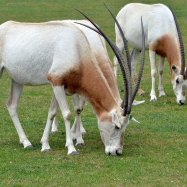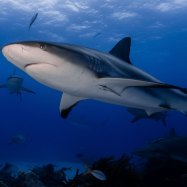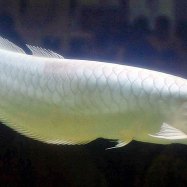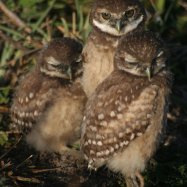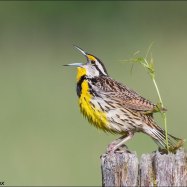
Galapagos Penguin
49-53 cm
The Galapagos Penguin, native to the stunning islands, is the only penguin species found north of the equator. These slender creatures, measuring 49-53 cm, thrive in coastal areas and are classified under the family Spheniscidae. Visit the Galapagos Islands to catch a glimpse of these charming birds in their natural habitat. #GalapagosPenguin #wildlifeencounter #Spheniscidae
Animal Details Summary:
Common Name: Galapagos Penguin
Kingdom: Animalia
Habitat: Marine
Welcome to the World of the Galapagos Penguin: A Unique and Endangered Species
Nestled in the crystal clear waters of the Galapagos Islands, a special animal calls this place home – the Galapagos Penguin. This charming creature is a one-of-a-kind species with a long history and a fascinating evolution. Characterized by its distinctive black and white markings, slender body shape, and small size, it is a standout among its fellow penguins. However, as much as it is adored, this species is also facing a harsh reality – it is endangered Galapagos Penguin.The Origins of the Galapagos Penguin
The Galapagos Penguin, scientific name Spheniscus mendiculus, belongs to the animal kingdom, class Aves, and order Sphenisciformes. As its name suggests, it is endemic to the Galapagos Islands, a Pacific archipelago that is part of Ecuador. This species is the only penguin found in the Northern Hemisphere, making it a unique and interesting animal to study and observe.A Habitat Uniquely Challenging
The Galapagos Penguins' habitat is the marine ecosystem, where they spend most of their day swimming, hunting, and navigating the ocean's currents. This species has adapted to life in a hot and dry climate, which is unusual for penguins. This challenging habitat is made even more difficult by the El Niño and La Niña weather patterns, which can cause drastic changes in water temperature and food availability.Carnivorous Creatures of the Sea
Just like their fellow penguins, the Galapagos Penguins are carnivores, meaning their diet only includes meat. These small but mighty creatures feed on a variety of fish and squid species found in the surrounding waters. They are exceptional hunters, using their streamlined body shape and short but powerful flippers to propel themselves through the water in pursuit of their prey Grey Seal.The Galapagos Islands – the Only Home of the Galapagos Penguin
The Galapagos Islands, located off the coast of Ecuador, is the only place in the world where the Galapagos Penguin is found. These islands are a UNESCO World Heritage Site and are known for their diverse and unique animal and plant species. The Galapagos Penguins have adapted to life on these remote islands, with most of their population living on Isabela, Fernandina, and Bartolomé Islands.Adapting to Life on Land
Unlike most penguin species, the Galapagos Penguin has adapted to living in a tropical climate, which poses a unique set of challenges. One of the most remarkable adaptations of this species is their ability to withstand extreme temperatures. The Galapagos Penguin is the only penguin that has evolved to tolerate the warm equatorial waters that surround their islands. Additionally, they have a higher number of feathers than other penguins, which helps with thermoregulation. They also have a smaller body size, allowing them to conserve body heat more efficiently.An Endangered Species in Need of Protection
Despite their remarkable adaptability and unique traits, the Galapagos Penguin is currently facing a severe threat – extinction. This species is currently listed as endangered on the International Union for Conservation of Nature (IUCN) Red List, with an estimated population of only 2,000 individuals. This is a significant decline from the 1970s when their population was estimated at around 6,000 individuals.The Challenges of Being Endangered
There are various factors contributing to the decline of the Galapagos Penguin population, including habitat loss, food scarcity, and human activities. These penguins are often affected by oil spills, which can contaminate their feathers, affecting their ability to regulate their body temperature. They are also impacted by overfishing, which depletes their food sources and forces them to travel further distances in search of food. Additionally, their population is also affected by climate change, as rising sea levels threaten their nesting areas.Conservation Efforts for the Galapagos Penguin
Despite these challenges, there is hope for the Galapagos Penguin. Various conservation efforts have been initiated to protect this species and ensure its survival. The Galapagos National Park has established marine protected areas to safeguard the penguins' feeding grounds, and strict regulations are in place to prevent overfishing and oil spills. These efforts have helped to stabilize the population and increase awareness about this unique and endangered penguin.Educating Future Generations
One of the key steps in protecting the Galapagos Penguin is educating future generations about the importance of conservation and the impact of human activities on the environment. The locals and tourists who visit the Galapagos Islands play a significant role in protecting this species. With increased awareness and understanding, visitors will be more careful and responsible in their interactions with the penguins and their habitat.The Charms of the Galapagos Penguin
The Galapagos Penguin is not only a unique and endangered species, but it also has many charming attributes that make it a fan favorite. Its distinctive black and white markings give it a distinguished and sleek appearance. Its small size makes it endearing and approachable, and its playful nature is a delight to observe. This species is also known for its monogamous relationships, with mated pairs often staying together for life.Extending the Lifespan of the Galapagos Penguin
The Galapagos Penguin has a lifespan of around 10 years in the wild. However, with the threats this species is facing, it is essential to extend their lifespan as much as possible. The Galapagos National Park conducts regular health checks and monitoring of the penguin population, providing medical care and rehabilitation for injured birds. This helps to not only protect the individual penguin but also contribute to the overall health and survival of the species.A Call to Action
The future of the Galapagos Penguin hangs in the balance, with the fate of this unique and endangered species in the hands of humans. The ongoing efforts to protect and conserve this species need to be strengthened and supported by all. Education, awareness, and responsible actions are key in ensuring the survival of the Galapagos Penguin and the preservation of its home – the Galapagos Islands.In Conclusion
In a world filled with amazing and diverse animal species, the Galapagos Penguin stands out as a one-of-a-kind creature. Its adaptability, resilience, and charming nature make it a fascinating species to study and observe. However, the challenges it faces remind us of the importance of responsible and sustainable actions to protect our environment and the incredible animals that call it home. Let us all come together to ensure that the Galapagos Penguin continues to thrive and enchant future generations with its uniqueness and beauty.
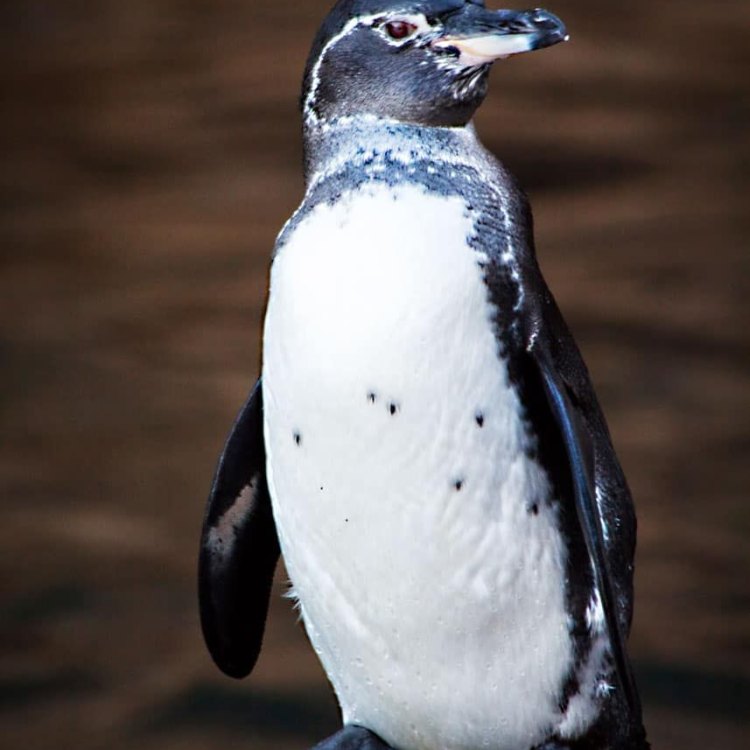
Galapagos Penguin
Animal Details Galapagos Penguin - Scientific Name: Spheniscus mendiculus
- Category: Animals G
- Scientific Name: Spheniscus mendiculus
- Common Name: Galapagos Penguin
- Kingdom: Animalia
- Phylum: Chordata
- Class: Aves
- Order: Sphenisciformes
- Family: Spheniscidae
- Habitat: Marine
- Feeding Method: Carnivore
- Geographical Distribution: Galapagos Islands
- Country of Origin: Ecuador
- Location: Coastal areas and islands
- Animal Coloration: Black and white
- Body Shape: Slender
- Length: 49-53 cm
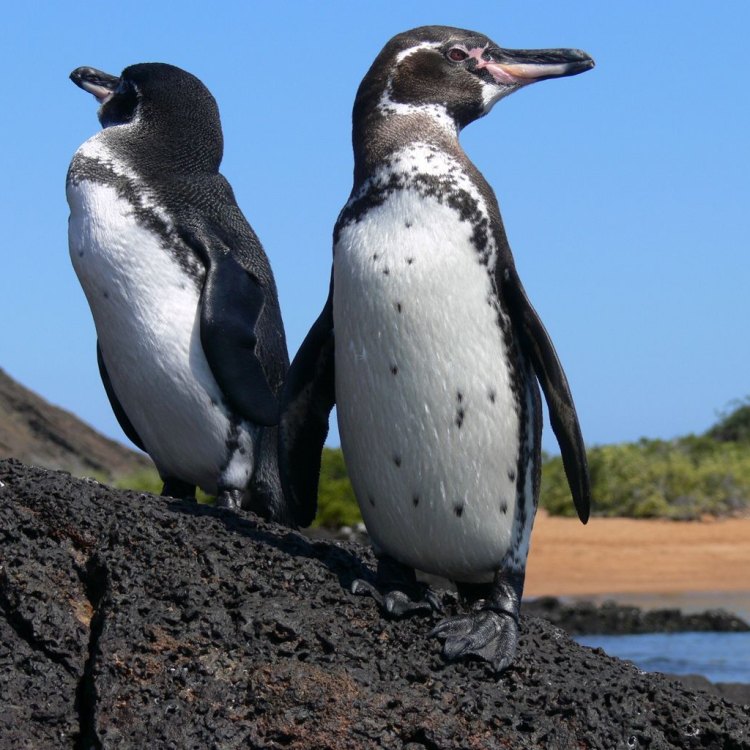
Galapagos Penguin
- Adult Size: Small
- Average Lifespan: 15-20 years
- Reproduction: Monogamous
- Reproductive Behavior: Mating pairs perform a courtship display
- Sound or Call: Melodious braying call
- Migration Pattern: Non-migratory
- Social Groups: Colonial
- Behavior: Social and playful
- Threats: Climate change, habitat loss, and predation
- Conservation Status: Endangered
- Impact on Ecosystem: Important prey species
- Human Use: Tourism and research
- Distinctive Features: Black head and wings, white belly, and a thin white line that extends from the eye to the neck
- Interesting Facts: They are the only penguin species found north of the equator
- Predator: Sharks, fur seals, and sea lions
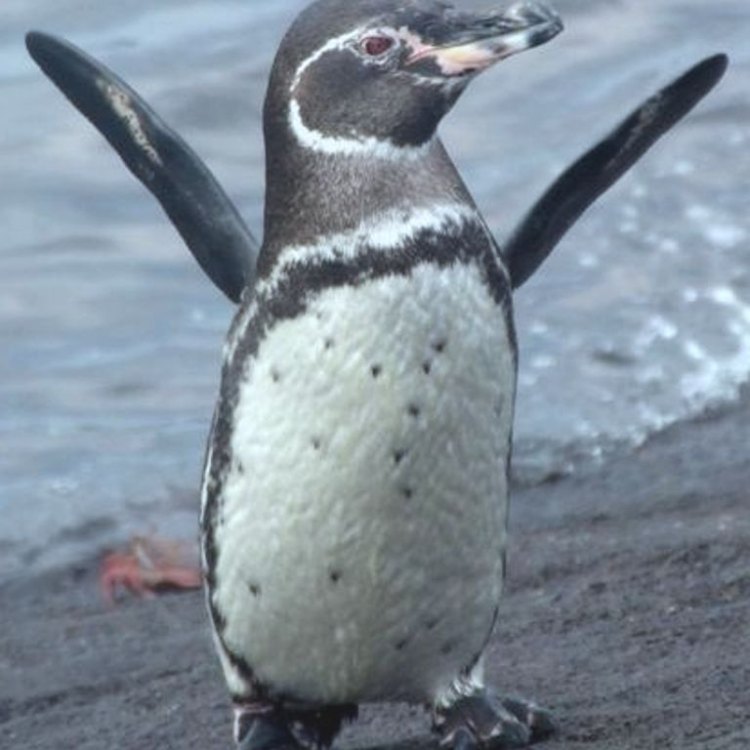
Spheniscus mendiculus
The Enigmatic Galapagos Penguin: A Unique and Endangered Species
The Galapagos Islands, located off the coast of Ecuador, are renowned for their diverse and fascinating array of plant and animal species. Among these species is an elusive and charming creature - the Galapagos Penguin. This fascinating bird has captured the hearts of many with its distinctive features and intriguing behaviors. However, as with many other species in the Galapagos Islands, the Galapagos Penguin faces numerous threats and challenges, making it an endangered species PeaceOfAnimals.Com.The Galapagos Penguin (Spheniscus mendiculus) is the only penguin species found north of the equator. They are small in size, with adults reaching an average height of 19 inches and a weight of around 5 pounds. These penguins have a relatively short lifespan, with an average of 15-20 years in the wild. However, some have been known to live up to 25 years. Although small in size, the Galapagos Penguin plays a crucial role in the delicate ecosystem of the Galapagos Islands.
One of the most intriguing aspects of the Galapagos Penguin is its unique reproductive behavior. Unlike other penguin species, the Galapagos Penguin is monogamous, forming long-term bonds with a single mate. During the breeding season, which usually occurs between May and January, mating pairs perform a beautiful courtship display. The male will bow and stretch its neck while braying a melodious call to attract his mate Gerberian Shepsky. This behavior is not only charming to witness but is also essential for strengthening the pair's bond.
The mating pair will then find a suitable nest site and work together to build a nest made of rocks, feathers, and guano. The female will lay two eggs, and both parents take turns incubating them for 38-42 days until they hatch. Once the chicks have hatched, the parents work together to feed and protect them until they fledge after 60-65 days. The close-knit bond between the Galapagos Penguin pairs is essential for successfully raising healthy chicks, ensuring the continuation of the species.
The Galapagos Penguin is known for its distinctive and melodious braying call, hence its scientific name, Spheniscus mendiculus, which means "begging wedge." This call is a way for the penguins to communicate with one another, especially during the breeding season. It is also used for territorial advertisement and courtship purposes.
Unlike most penguin species, the Galapagos Penguin is non-migratory, meaning it does not migrate to warmer waters during the winter months. Instead, they have adapted to the warm temperatures of the Galapagos Islands by developing unique behaviors to cool down. These include spreading their flippers and feathers, panting, and holding their wings away from their body to increase airflow. These adaptations have allowed the Galapagos Penguin to thrive in a climate that would be too warm for most penguin species.
The Galapagos Penguin is a colonial species, meaning they live in large groups, and many breeding pairs can be found in close proximity to one another. This social behavior is essential for the penguins' survival, as it provides safety in numbers, and individuals can cooperate to defend their territory and their young.
Perhaps one of the most endearing and captivating features of the Galapagos Penguin is its social and playful behavior. These penguins are known to be curious and often interact with humans, making them popular among tourists. They can often be seen swimming, playing, and even jumping out of the water, displaying their natural acrobatic abilities. The playful nature of these penguins is a delight to witness and has made them a popular attraction for tourist activities.
Unfortunately, despite their charm and unique features, the Galapagos Penguin faces numerous threats and is currently listed as an endangered species by the International Union for the Conservation of Nature (IUCN). The primary threat to their survival is climate change. Rising ocean temperatures result in warmer waters, which reduce the abundance of sardines and other fish, the Galapagos Penguin's main prey. This lack of food and poor breeding conditions have resulted in a decline in the penguin population.
Another significant threat facing the Galapagos Penguin is habitat loss. Human development, such as coastal construction and tourism, has disrupted their natural habitat, leaving the penguins with fewer areas to breed and raise their chicks. This loss of habitat also makes them more vulnerable to natural disasters, such as El Nino events. In 1982-1983, an El Nino event resulted in the Galapagos Penguin population decreasing by 70%.
The Galapagos Penguin also faces predation from natural predators, such as sharks, fur seals, and sea lions. These predators have increased in numbers due to overfishing, which has reduced their competition for food. As a result, they are now more likely to prey on the Galapagos Penguin, further decreasing their already vulnerable population.
The conservation status of the Galapagos Penguin has attracted attention from researchers and conservationists worldwide. The Charles Darwin Foundation and Galapagos National Park work tirelessly to protect and conserve this endangered species. Efforts include monitoring the population size, protecting nesting sites, and implementing sustainable tourism practices. These conservation efforts have shown positive results, with the penguin population slowly increasing.
Apart from being a crucial element of the Galapagos Islands' unique ecosystem, the Galapagos Penguin also holds significant economic value. Tourism is one of the primary sources of income for the Galapagos Islands, and the penguins' presence attracts thousands of visitors every year. These tourists contribute to the local economy by participating in tourist activities and purchasing souvenirs, creating a significant incentive to protect and preserve the Galapagos Penguin.
The Galapagos Penguin's distinctive features and intriguing behaviors have captured the hearts of many, making it a favorite among tourists and researchers. However, the threats facing this species highlight the need for conservation efforts and sustainable practices to ensure its survival. The Galapagos Penguin's fate is intertwined with the delicate balance of the Galapagos Islands' ecosystem, and its survival is crucial for maintaining the islands' biodiversity. As responsible stewards of the natural world, it is our responsibility to protect and preserve these unique and endangered species like the Galapagos Penguin for future generations to appreciate and cherish.
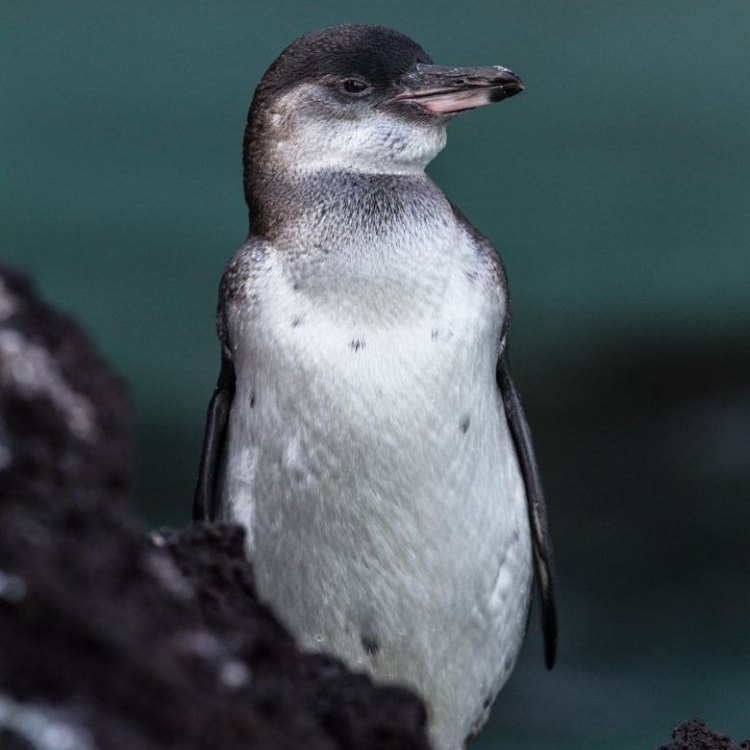
Welcome to the World of the Galapagos Penguin: A Unique and Endangered Species
Disclaimer: The content provided is for informational purposes only. We cannot guarantee the accuracy of the information on this page 100%. All information provided here may change without prior notice.

